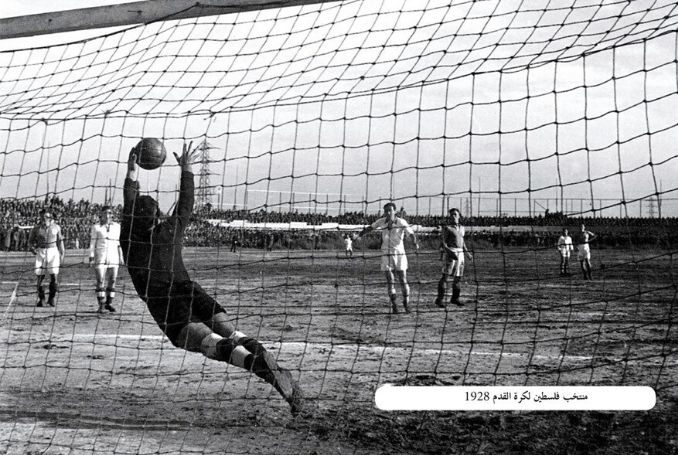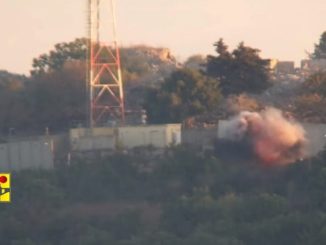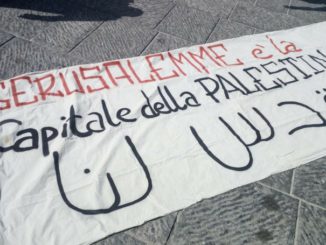
Though Palestinian sports had made remarkable progress (especially internationally) since the Oslo Accords in 1993 until now, however, this progress was on the account of many national values accumulated throughout the period 1950s – 1980s. Regardless of the successes Palestinian sport recently achieved at local, regional, and international levels, it has turned from a social-patriotic-democratic means that sought to achieve national goals into an institution whose survival depends on its legitimacy in the eyes of the international community rather than its popularity among the Palestinian people.
In 1948, the Nakba (‘Catastrophe’) made three-quarters of a million Palestinians homeless, leading to the creation of refugee camps across Palestine, as well as Jordan, Lebanon, and Syria. Later, Palestinian sports had been launched from clubs in cities in Gaza and the West Bank and these in the refugee camps. Since the late 1960s until 1993 sports in Lebanon, Syria, Jordan, Iraq, and the Gulf States were under the supervision of the PLO. After the Oslo Accords, most of the Diaspora political elite became centralized in the West Bank and Sector Gaza. The dissolving of the PLO as the only and legitimate representative of the Palestinian people by the PA after the Oslo Accords had its negative impacts on the course of the sports movement; on its credibility as part of the Palestinian national movement.
How We Became #Refugees: The Day My Grandfather Lost His Village in #Palestine https://t.co/FH7GkOvf32 via @PalestineChron #Nakba #Nakba72 #NakbaDay #RightOfReturn pic.twitter.com/hNawnQxAc1
— @palestinechron (@PalestineChron) May 19, 2020
In the 1970s-80s, in the West Bank and Sector Gaza, Palestinians were facing the occupation and its stumbling effects. However, their daily confrontation with the occupation (and their sufferings) had moral implications on them. Gaza Sector and the West Bank at that time were free of the corrupt bureaucratic system. They lacked governmental institutions such as the Ministry of Youth and Sports or sports federations.
These institutions are the basic condition for sports growth in any country. Their lack resulted in a clear delay in sports development at the time when Palestinian sports in Arab countries, as well as sports in Arab countries, made reasonable growth. However, the absence of a state may have its positive effects on some aspects. As Amal Jamal put it “The lack of a central authority led to the development of a vibrant civil society [in Palestine].”
Rabitat al-Andiyyah al-Riyadiyya Association of Athletic Clubs was established in 1975 in the West Bank. And in 1978 another Rabitat al-Andiya was established in Gaza Sector. It is worth mentioning that al-Rabita took its legitimacy from the wide fundament of the people and athletes in the West Bank and Gaza Sector. At that time social-athletic clubs and civil societies institutions were mostly part of the national movement that its line was parallel to that of the PLO. This included clubs in the West Bank and Gaza Strip some of which were funded by Fatah. At the same time, this period was described as an interconnected society with a strong and homogeneous social fabric. Sport contributed to the strengthening and maintaining of the Palestinian social fabric. It brought youth from villages, cities, political factions, Muslims, and Christians together.
From Rona Sela's "Photography in Palestine in 1930s & 1940s": Kluger, Sport, 1940s http://t.co/5zpJEehTQr pic.twitter.com/ln4ETMjhBB
— Taking it easy… (@Finance_Fan) September 14, 2014
After the initial breakout of the Intifada, Al-Rabita was suspended spontaneously until the end of 1991 and re-established in January 1992. However, it was suspended again due to the Oslo Agreement and the construction of the new institutions by the Palestinian Authority which competed with the existing Palestinian civil organization and sought to control or suspend them. “The new Palestinian Authority rejected the civil organizational infrastructure, instead it promoted the establishment of new institutions loyal to it. When the returning PLO rank and file entered the West Bank and Gaza Strip in accordance with the terms of the Interim Agreement, it changed the social fabric of Palestinian society in these areas,” wrote Amal Jamal.
The focus on the West Bank as a center of all activities – whether political, cultural or athletic – led to the weakness of the PLO. Palestinian refugees, especially those displaced in 1948, felt marginalized on many fronts, including sports. What is happening today is that some parts of Palestinian Diaspora (especially in Lebanon) feel neglected and marginalized. Palestine Football Association’s (based in Ramallah) focus was and still on the West Bank. The second Football Association has been established in Lebanon (PFA in Diaspora). Obviously, a lack of coordination between these two associations is existing. The return of top PLO figures to Palestine after decades of exile turned the West Bank and Gaza Strip into the center of gravity for Palestinian sports.
#Siblin #Lebanon #UNICEF #UNRWA #Palestiniadi #Palestine #Olympic #Games #Football #STC http://t.co/OPzRIRHWe0 pic.twitter.com/ZxwkWj2apj
— OlymPicture (@Olym_Picture) April 26, 2015
The establishment of new governing institutions for sports opened the door for the PA to create its own circles and supporters. The patterns of recruitment (such as patronage and partisanship) familiar in Arab society were the most available. It was not based on competence and equal opportunities. The returnees considered themselves the most deserving of governmental jobs. Although the people in Gaza and the West Bank highly appreciate the returnees’ previous sacrifices, however, these returnees imagined that they were the ‘real’ fighters for the Palestinians rights, and that is why they deserve the high-rank jobs.
An understanding of Palestinian sports after Oslo requires consideration the major split between the returnees and their partners from the occupied territories, and, on the other hand, the growing number of independent sports activists representing athletes, veterans and the leaders of social-athletic clubs, who emerged under occupation and became increasingly dissatisfied with the power structures emerging in the PA. Club leaders, former Rabitat al-Andiya’s leaders, and sports activists have been marginalized and ignored or forced to work with the new PA but to submit only to its orders. They felt they had lost privileges they enjoyed before such as initiatives and independency. It was clear that there was a cultural and ethical confrontation between these and the PA.
The Palestinians today are reaping the results of the Oslo Accords: land-grabbing, expansion of the Israeli settlements, the Separation Wall, the increased number of checkpoints, and the 13-years Gaza blockade. Since 1993 until now about 125,000 Palestinians have been arrested, and more than ten thousand have been killed. Of course, the sport was not in isolation from this arbitrary Israeli practice, athletes’ movement was restricted, stadiums were bombed, athletes have been arrested, some of them were shot.
Comparing the situations in Gaza and the West Bank before and after the Oslo Agreement, one will easily notice the increasing gap between the two as a result of the obstacles the occupation put in place that had led to the dispersion of the Palestinian sports. Jerusalem had been isolated from the West Bank. The distance between cities and villages in the West Bank had doubled three or four times during the twenty-seven years of the Oslo Agreement.
Unfortunately, the PA did not take a strict stance against the Israeli occupation’s practices. On the contrary, it had to provide the ‘landlord’ with few services in order to keep the ‘lease’ on (such as security coordination with the occupation). The leading BDS (Boycott, Divestment and Sanctions) figure Omar Barghouti maintains that Palestinian officials spearheading the campaign to expel Israel from FIFA in 2015 “was our Achilles’ heel because the Palestinian Authority (PA) is chained to the humiliating Oslo agreement and is not designed to resist Israel’s regime of oppression in any meaningful and strategic way.”
Mondoweiss explains that “The lack of firm institutional support from the PA means that sustained civil society pressure, which BDS seeks to generate, is crucial for convincing national and international sporting institutions, such as the PFA and FIFA, to take decisive action against Israel.”
The story of Gaza's first Olympic athlete – https://t.co/18NgsbnYRB – In 2004, the 800m runner Sanaa Abu Bkheet became the first athlete from the Gaza Strip to represent Palestine at the Olympic Games. She led the Palestinian delegation at the opening ceremony, the first time … pic.twitter.com/KilGVgCbgj
— Trending Press News (@trendingpress1) August 15, 2018
After the Oslo Agreement Palestinian economy became a hostage for international grants, therefore, any cessation of aid to the Palestinian Authority could easily affect all spheres of life, including sport that depends on the PA. For instance, the PA’s financial crisis has also led the government to stop paying club allocations, which vary by club level of $ 70,000 for professional league clubs.
There are some who believe that the Oslo Accords accelerated the process of Palestine’s admission into the International Olympic Committee IOC and the International Football Association FIFA especially the applications to join these two organizations were rejected several times previously. This admission was an appreciation to Palestinians for their ‘integration’ in the international community. While others argue that Palestine as a member of FIFA has a significant opportunity to be presented as an independent nation, and as an integrated entity in the international community. This affiliation refutes the alleged claims that Palestinians lack the ingredients to be presented in international organizations.
Despite dispersion and exile, Palestinian sports, prior to the Oslo Accords enjoyed more democracy and integration than today. In his book The Question of Palestine, published in 1979 Edward Said wrote: “It’s a matter of national pride that today’s [prior to 1993] Palestinians is better schooled in the ways of political democracy than any other Arab, and this despite dispersion and exile.”
Many believe that Palestinian sports under occupation experienced a democratic system of sports governance. Talking with veterans in the West Bank, they admitted that during the period previous to 1993 they were free to criticize and share opinions; they admitted they were not dictated from an absolute power from above. Sports was a good means that contributed through other aspects in building a new Palestinian citizen socially, nationally, and democratically.
– Issam Khalidi is an independent scholar living in Monterey, California, is the author of History of Sports in Palestine 1900-1948 (in Arabic), One Hundred Years of Football in Palestine (in Arabic and English), co-edited Soccer in the Middle East (Rutledge.), as well as articles and essays on the subject of sports included at www.hpalestinesports.net








